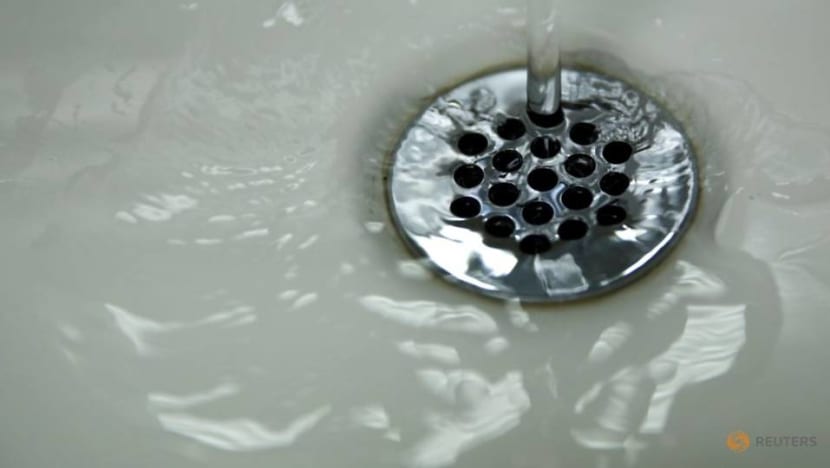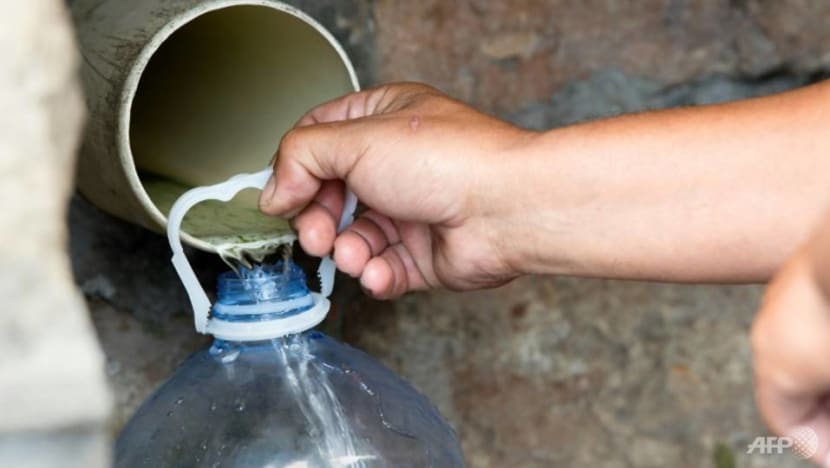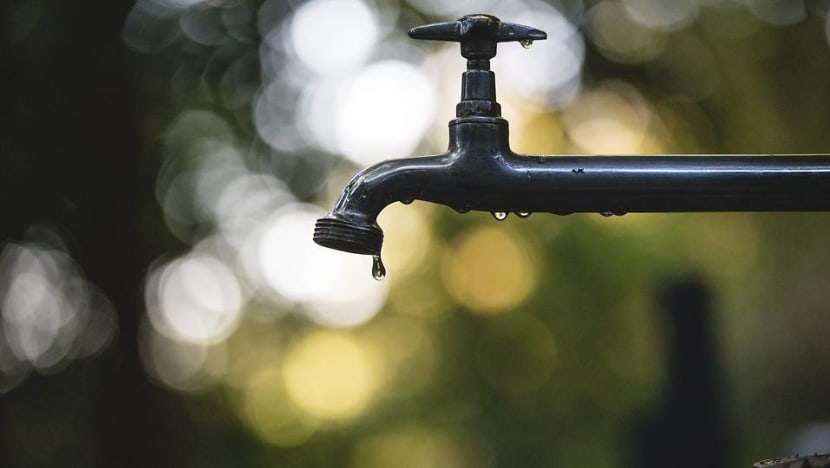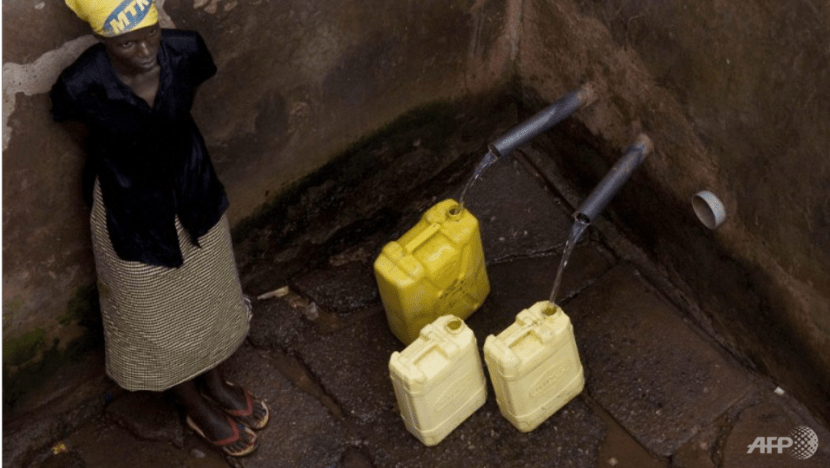commentary Commentary
Commentary: Think outside of the box to tackle water scarcity
To truly tackle water scarcity, we need to rethink the different aspects of water management, says one observer.

(Photo: REUTERS/Carlos Barria)
SINGAPORE: Water scarcity has been a ticking time bomb across the globe.
Cape Town, one of Africa's most affluent metropolises, was on the brink of disaster when it rapidly approached “Day Zero” – a moment when dam levels would be so low that taps would be turned off, and people must start queuing for water.
While the city narrowly missed “Day Zero” as predictions pushed the day to 2019, the rest of the world watched closely, reminded that water scarcity is an ever-present threat for all nations.
READ: Cape Town may be the world's first major city to run out of water, a commentary
In Asia, the threat is more present than ever – water demand is forecasted to increase by 55 per cent by 2050, as population also increase. A recent study by MIT found an additional 200 million people across Asia would be vulnerable to severe water shortages by 2050.
Worsening climate conditions such as droughts further dwindle our limited water resources.
The problem varies from country to country: Myanmar loses some 100 million gallons of water daily in the supply process due to theft, metering inaccuracies or leaks caused by wear and tear in pipes from high water pressure conditions.
In Malaysia, high water pressure in ageing pipes results in pipe bursts, causing frequent water supply shortages that affect both citizens and businesses.

In spite of the water agreement with Malaysia expiring in 2061, Singapore’s water future looks reasonably secure thanks to NEWater and desalinated water through reverse osmosis. Sustaining water supply, however, could become an energy-intensive affair.
Reverse osmosis uses about 3.5 kilowatt hours to produce 1 cubic metre of desalinated water.
Singapore uses about 430 million gallons a day, out of which up to 30 per cent are desalinated. This translates to at least 1.68 gigawatt hours of energy a day, equivalent to powering more than 5,000 three-room Housing Development Board flats for more than a month.
Despite national and regional cooperation to tackle water issues, progress is not coming fast enough as Asia’s water woes worsen.
READ: Singapore’s water story underscores the value of preparedness, a commentary
To truly tackle water scarcity in the region, countries need to take a step back and rethink the different aspects of water management. Governments, industries and consumers need to consider new perspectives to improve current practices to meet our water needs.
REDEFINE THE WATER CYCLE
Technology has allowed us to reconsider man’s relationship with the water system, which has traditionally been a one-way process, moving water from supply to demand.
Now, new digital innovations are able turn this relationship into a dialogue – by retrieving feedback throughout the process – and providing new ways to long-standing issues when it comes to water security.
Real-time sensors and data analytics are increasingly used in Singapore and the region to conduct pre-emptive and predictive maintenance of the entire system.
Intelligent technology can also predict changes in demand, and proactively adjust water pressures to prevent excessive stress on pipes. Notably, new technology has been able to address a seemingly simple but serious issue: Water leakage, which is a prevailing problem in many cities.

For example, an intelligent water management pumping solution can automatically adjust water flow through the use of remote sensors, reducing excessive pressure in water pipes. This limits water leakages and losses, minimising cost and energy.
On the demand side, consumers must reconsider our position in the water cycle, and take on a more active role. Data can help increase public awareness of water issues and strengthen conservation efforts. The hope is that knowledge will change our behaviour.
One study by Singapore’s national water agency, PUB, and the National University of Singapore found that a person could save up to 5 litres of water a day using smart shower devices.
READ: Beyond price hikes and conservation campaigns, saving water through smart showers, a commentary
The Singapore Government will be deploying these devices over the next two years in new homes under a demonstration project with the Housing Development Board.
BREAK INTO NEW WAYS OF FINANCING
While digitalisation holds vast potential for water conservation, success in addressing global water challenges requires us to not only look at innovation through technology, but also partnerships.
A key barrier across the region to adopting new technologies has been financing, especially for developing countries. Most are unable to afford the burden of these huge infrastructure costs, while some see new innovations as an expense rather than an investment.
Governments can look beyond traditional avenues of water financing, and expand into alternative approaches, such as forward-looking business models, new funding strategies, and new collaborative partnerships.
READ: Has the well of good ideas and public policy on water run dry? A commentary
India, for example, has turned to public-private partnerships (PPPs) to provide much needed funding and investment for numerous projects – such as when the World Bank assisted the Karnataka Urban Water Sector Improvement Project in 2011.
PPPs allow the private sector to contribute in terms of the design, construction or operations of facilities, while tapping into public funding. The partnership can be useful in situations where countries lack the political will to apply cost-recovery tariffs.
Developing countries can also look to institutions that have expressed long-term interest in backing water infrastructure development for the region.

Earlier this year, the Japan International Cooperation Agency signed an agreement with the Myanmar government to provide aid of up to US$22 million to enhance the water supply systems in Mandalay with the installation of new pipes, wells, tanks, pumps and water meters.
A new approach that encourages the adoption of new technology is exploring new business models. Water solutions providers can opt to be flexible in receiving payments in instalments, or innovatively channel efficiency savings made by customers into part of the payment scheme.
In Cambodia, some private water operators have started opting to pay for their pump system through annual instalments, which are financed by the money saved on energy and water bills as a result of equipment upgrade.
Not only would this remove barriers in terms of the usual upfront investment, it also allows solution providers to demonstrate the confidence they have in their products’ ability to “pay back” the amount.
THE FUTURE OF WATER MANAGEMENT
Water management is one of the biggest socio-economic-ecological issues of the 21st century. We can no longer look at traditional practices to address contemporary water challenges.
It is crucial to encourage out-of-the-box, creative thinking in all fields of water resources management, whether it is policy, planning, management, development, as well as institutional, technological and financial aspects.
Aloysius Chan is Grundfos’ water utility manager.















